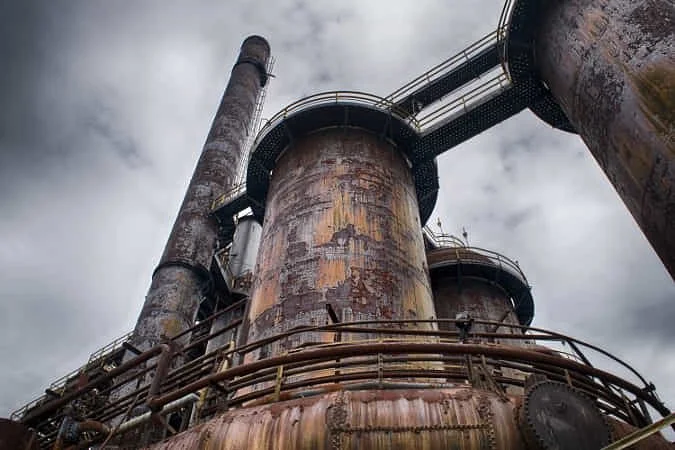From Industrial Revolution to Climate Crisis: Tracing the Roots of Modern Environmental Challenges
The Industrial Revolution, a period of unprecedented innovation and progress, laid the groundwork for the modern world. However, this transformative era also set the stage for a cascade of environmental issues we face today. As the world grapples with the effects of climate change, it is vital to understand the connection between the Industrial Revolution and the current state of our planet. This article will explore how the Industrial Revolution led to the climate crisis we now face, focusing on the crucial role played by Carbon Dioxide, Greenhouse Gas, Wildfire, Air pollution, Automobiles, glacier, ice, and technology.
Carbon Dioxide and Greenhouse Gas Emissions
One of the most significant contributors to climate change is the increase in carbon dioxide (CO2) and other greenhouse gas emissions. The Industrial Revolution saw the widespread adoption of coal, oil, and natural gas as primary energy sources, replacing traditional means such as wood and wind power. These fossil fuels release large amounts of CO2 when burned, contributing to the greenhouse effect—a process where heat from the sun is trapped within the Earth's atmosphere, raising global temperatures.
The burning of fossil fuels also led to a significant increase in other greenhouse gases, such as methane and nitrous oxide. Industrial processes such as the production of cement, iron, and steel, along with the advent of large-scale agriculture and livestock farming, further exacerbated the problem. As a result, the Earth's atmosphere now contains more greenhouse gases than at any point in the last 800,000 years, driving the rapid warming of our planet.
Wildfires and Deforestation
Another consequence of the Industrial Revolution is the increased frequency and severity of wildfires. As industries expanded and populations surged, the demand for resources such as timber and agricultural land grew exponentially.
This led to widespread deforestation, which not only released significant amounts of carbon dioxide but also disrupted ecosystems and increased the likelihood of wildfires. With fewer trees to absorb CO2 and provide shade, the Earth's surface became hotter and drier, creating conditions conducive to wildfires. The smoke and soot generated by these fires further exacerbate air pollution and contribute to the greenhouse effect.
Air Pollution
The Industrial Revolution marked the beginning of large-scale air pollution due to the burning of fossil fuels and the proliferation of factories. Coal-fired power plants, steel mills, and other industrial facilities spewed massive amounts of pollutants such as sulfur dioxide, nitrogen oxides, and particulate matter into the atmosphere. These substances not only have detrimental effects on human health, but also contribute to climate change by trapping heat within the Earth's atmosphere and disrupting weather patterns.
Automobiles and Transportation
The invention and widespread adoption of automobiles, another significant product of the Industrial Revolution, further compounded the problem of air pollution and greenhouse gas emissions. Fueled by petroleum, automobiles release carbon dioxide, nitrogen oxides, and other harmful pollutants into the atmosphere. As the global population and demand for transportation increased, so too did the number of vehicles on the road, amplifying the environmental impact.
Moreover, the transportation sector as a whole, including aviation and shipping, is a major source of greenhouse gas emissions. As trade and globalization flourished during and after the Industrial Revolution, the demand for faster and more efficient means of transportation grew, leading to a significant increase in emissions.
Glaciers and Ice
As greenhouse gas emissions continue to rise, the Earth's temperature steadily increases, leading to the rapid melting of glaciers and ice sheets. The loss of these vast ice reserves contributes to rising sea levels, threatening coastal communities and causing significant shifts in ecosystems. Additionally, the melting of Arctic sea ice exposes darker ocean water, which absorbs more sunlight and exacerbates global warming. This positive feedback loop, known as the ice-albedo effect, further amplifies the consequences of climate change.
Glaciers and ice sheets also play a critical role in the Earth's water cycle by storing and releasing freshwater. As they melt at an accelerated rate, the availability and distribution of freshwater resources are disrupted, leading to water scarcity and increased competition for this essential resource in many regions.
Technology and Industrialization
The rapid advancements in technology during the Industrial Revolution led to a highly interconnected and globalized world. While these innovations have undoubtedly improved living standards and driven economic growth, they have also contributed significantly to the climate crisis. The production and use of energy-intensive technologies, such as electricity generation, heavy machinery, and chemical manufacturing, have led to a sharp increase in greenhouse gas emissions.
Furthermore, the global nature of modern supply chains has resulted in increased emissions from transportation and shipping, as goods are transported vast distances to meet consumer demands. The expansion of industrial agriculture to feed the growing global population has also led to substantial increases in greenhouse gas emissions, deforestation, and habitat loss.
The Industrial Revolution, although instrumental in propelling humanity into an era of progress and prosperity, also sowed the seeds of the climate crisis we face today. The widespread use of fossil fuels, deforestation, air pollution, growth of the transportation sector, and technological advancements have all contributed to a significant increase in greenhouse gas emissions, leading to the devastating effects of climate change. As we confront these challenges, it is crucial to acknowledge and learn from the past, using this understanding to develop sustainable solutions that will safeguard the health of our planet for future generations.

